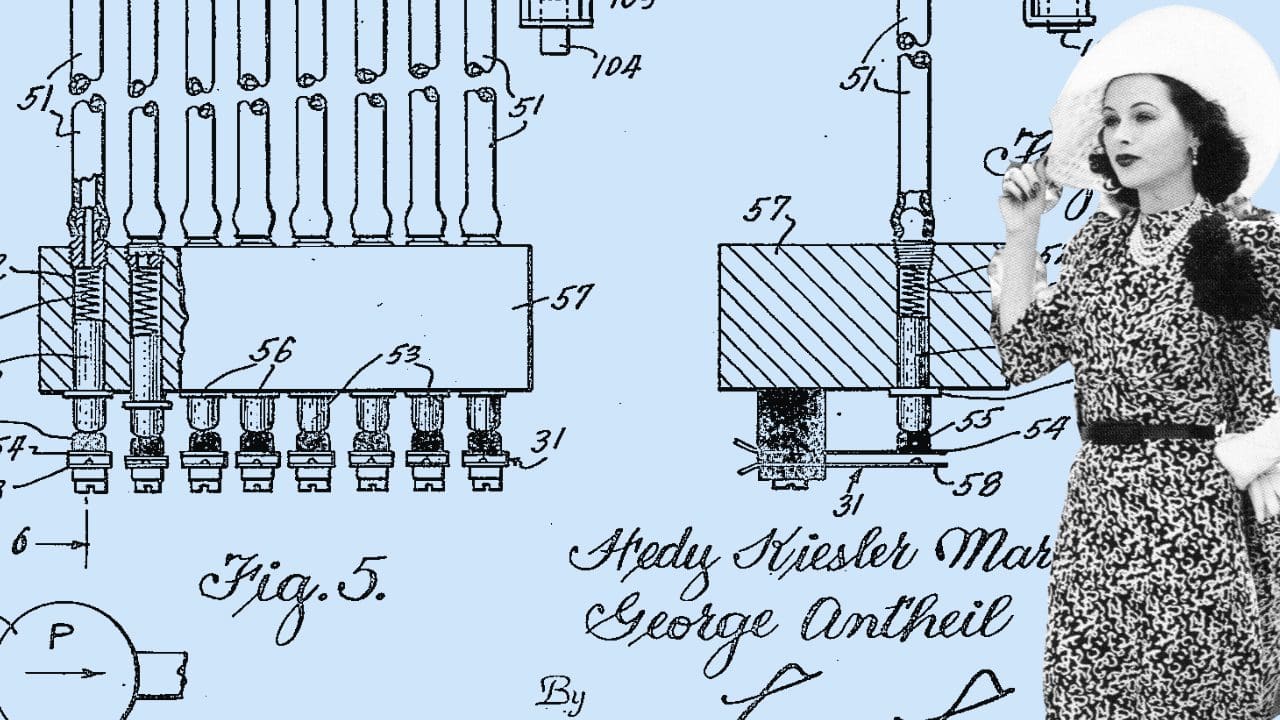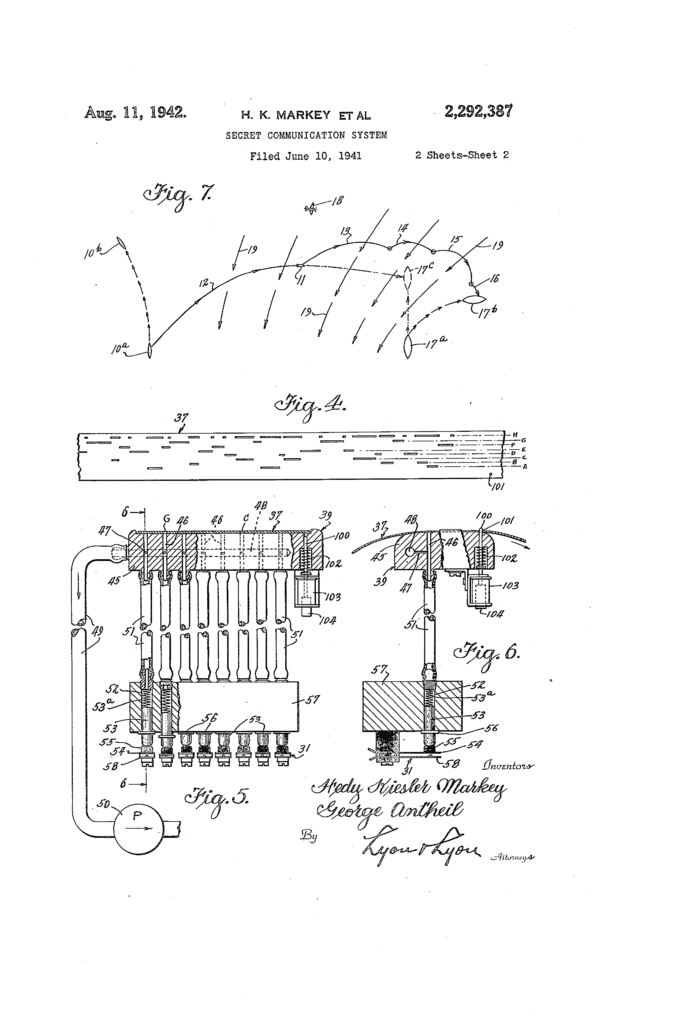Hedy Lamarr was a celebrated actress during Hollywood’s golden age. But behind a glamorous facade, she was also an accomplished inventor whose groundbreaking ideas would help shape the future of wireless communication.
Born in Vienna, Austria in 1914, Lamarr left her homeland in 1937. Her pursuit of acting led her to the United States, where she soon became a sensation. Lamarr’s on-screen performances in Oscar-nominated films like Algiers and Samson and Delilah cemented her status as one of Hollywood’s most iconic actresses.
Frequency Hopping Spread Spectrum (FHSS) and the Spark of Innovation
However, Lamarr’s interests and creativity extended far beyond her acting career. Deeply affected by World War II, she was determined to contribute to the war effort. Drawing inspiration from her surroundings, Lamarr, along with composer George Antheil, conceived a revolutionary idea: frequency hopping spread spectrum technology.
Lamarr and Antheil’s invention, named in 1942 in US patent 2,292,387A as “Secret Communication System,” aimed to address the issue of jamming radio-controlled torpedoes. The concept involved rapidly switching frequencies during transmission, making it nearly impossible for adversaries to disrupt guidance signals. While their invention did not gain immediate recognition, it laid the groundwork for future wireless technologies.
Lamarr’s Continuing Legacy
Decades later, Lamarr’s technology resurfaced as a crucial element in the development of modern wireless communication. In the 1960s, FHSS gained renewed interest, leading to its practical application in the following decades.
Hedy Lamarr’s remarkable journey from Hollywood actress to pioneering inventor is a testament to the multidimensional capabilities of extraordinary individuals. While her contributions to technology went largely unrecognized during her lifetime, Lamarr’s work helped inspire modern wireless communication technologies, including Wi-Fi and Bluetooth. Her example illustrates the immense impact that curiosity, innovation, and interdisciplinary thinking can have on shaping our world.
802® and Beyond
For almost half a century, IEEE 802 Working Groups have paved the way for technological connectivity in how people live, work, and communicate. The 802 family of standards has helped develop influential technologies, and the one most ubiquitous is wireless local area networks (WLAN), or Wi-Fi.
One of the original IEEE 802.11™ standards leveraged Lamarr’s FHSS patent, which had expired in 1959. Almost three decades later, when this standard was ratified by IEEE in 1997, it used the 2.4GHz radio frequency band and operated with a 1 or 2 Mbps data rate. The signal stopped at each frequency only long enough to transmit data, just as the original patent proposed.
Today, despite the introduction of Direct Sequence Spread Spectrum (DSSS), which reduces overall signal interference and has shown a stronger signal-to-noise ratio, FHSS continues to hold hold a rugged and reliable reputation, and is still used widely from walkie-talkies to remote-controlled transmitters and receivers of model cars, boats, and drones.
Read More:
Evolving IEEE 802.11 Standards for New and Emerging Wi-Fi Use Cases
The IEEE 802.11 Working Group has established several special-interest groups to investigate some of the emerging use cases for Wi-Fi, including Battery-Free, Ambient Power-Enabled Internet of Things (IoT) Networks; Augmented/Virtual Reality (AR/VR) and the Metaverse; and Artificial Intelligence/Machine Learning (AI/ML). And while Lamarr wasn’t around to see the development of this century’s wireless technology, her efforts have helped paved the way for technologies we have yet to imagine.
Help Keep the World Connected
Technology has become much more complex in the decades since the initial IEEE 802.11 standard was published, and the enduring value of that series of standards is a tribute to the global innovators who have contributed to it over the years.
As Wi-Fi networks continue to progress on multiple fronts, so will IEEE standards, to help to realize the full potential of Wi-Fi technology and serve the future industry and society.
Learn more and join our efforts to continue the evolution of this groundbreaking technology, which has given the gift of connectivity to the world.
Some information sourced from Famous Women in Engineering History – Book 1: Hedy Lamarr.










